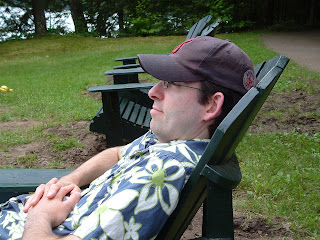I've managed a fair amount of game play over the past month, including ongoing weekly games online, a several day trip to Vermont while Toph was visiting from Kansas, and a few other odds and ends.
I've been playing a good deal of Carcassonne--3 games in VT (winning all 3 I might add!), a couple with my family (Abby & Link both enjoy the game), and a pair last night with Ben online.
Though I feel I am decent at the game I'm still developing a more aggressive strategy. It is altogether too easy to just go with the flow here and work on your features to score points. Though it is important to develop creative ways to score in Carcassonne, it is even more crucial to control the way the board layout unfolds as the game goes on. For instance, controlling how open and/or segmented the farms play out depending on if you're focusing on them as a central strategy or not is very important. It is easy to just let farms develop randomly as the game progresses, but a huge layer of strategy is lost when you do so.
When it comes to scoring points mid-game in Carcassonne (here I'm disregarding the farmer points scored during endgame), I see three levels of sophistication:
- 1) Beginner When a player first learns the game they try to build big features and score as many points as possible for them.
- 2) Intermediate As a player grows more familiar with the game he begins to appreciate the power of weaseling in on other players' features. That huge city your opponent has been building for the first half of the game can be completely neutralized if you can get one of your meeples into the action before the city is completed. This strategy is especially powerful if you can wait for an opportune moment and weasel in your BIG meeple to wrest full control of the city before it is completed.
- 3) Advanced Even more powerful at times than the strategy in #2 is simply placing tiles near your opponents' features that make it more difficult for them to score those features. This strategy is particularly useful because a) it doesn't require you to tie up one or more of your meeples in the attempt to neutralize an opponent's feature, and b) rather than simply getting a share of a completed city as in #2, you can tie up your opponent's meeples in a feature that may never be completed throughout the duration of the game. This is huge, as it is crucial to success in Carcassonne to have a good flow of meeple placement--if you are not cycling meeples onto the board and then back to your supply you will almost certainly lose. If you can force your opponent to have 2 or 3 meeples on the board in positions that are nearly impossible to close, you gain a massive advantage over the course of the game.


No comments:
Post a Comment